

Team:
BETA Robert – computer geek; jack of all trades
DOLEVA Zornitsa – writer; non-practicing intellectual
FERNANDES MAIA José Luis – poster child; Mr. inker upper
GAUBE Valère – writer; universal dilettante
GUSKOWSKI Leonie – writer; militant introvert
HOON Jo Yi – writer; coastal grandmother
JACQUEMIN Jennifer – writer; gamer; head chef
KARAMI Kasra – cage builder
MILLER Sofia – Metal pipes sounds enjoyer
MOGLIA Jacopo – writer; chief contemplative officer
MOUZAKITI Eleni – writer; social media
SALT Kieran Alexander – peddler of nonsense
SHATOKHINA Kristina – woman of vision; high priestess
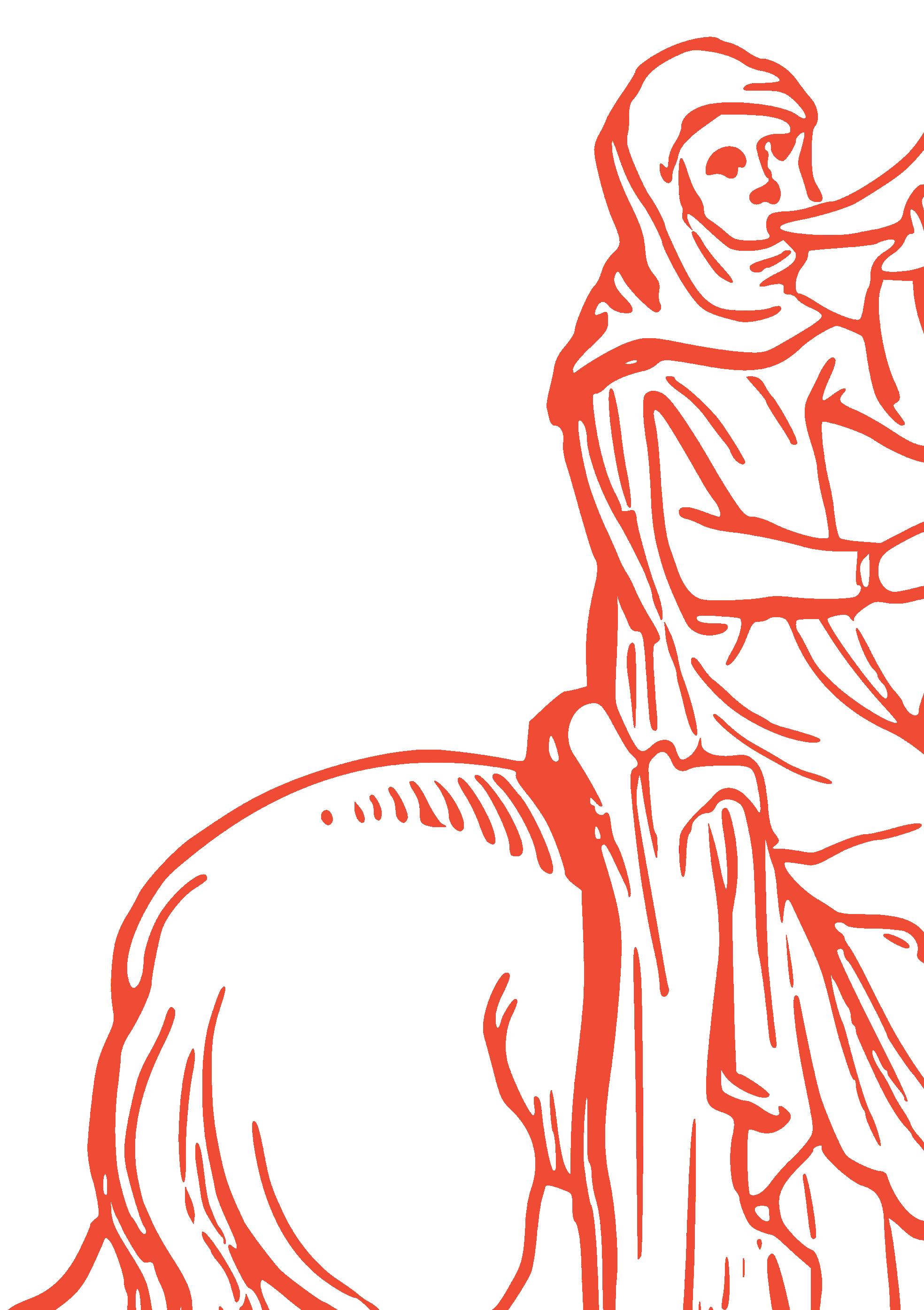
SOBRAL Cristina – writer; book devourer; overthinker
sofiya_10billion – film and multimedia expert
TAJTI Zoltan – Eastern machinations
We are thankful to: Office of Student Life, Veerle Waterplas, Sonja Di Renzo, Antonio Tavan, Repro Team, Espace Cultures, Anouk Wies, Karin Langumier, Bianca Pirelli, Andy Adams of the Alumni Network, Véronique Heitz and Rotondes, the fine people of Student Lounge Belval and all children of SAUL, Dalmat CoffeeHouse, Julie Toussaint, LLC, Julie Jephos, Inès Planchenault, and Silvia from Café Saga.
Unless otherwise noted, all images in the magazine are public domain as described in the Creative Commons CC0-1.0 Universal Public Domain Dedication licence, and fall under no copyright obligations. Direct all copyright claims to: roux.newspaper@gmail.com
Find us at: campus buildings (reception areas, magazine stands), Student Lounges, chill-out-zones, Dalmat CoffeeHouse, and LLC.
Join us! We are always looking for graphic designers, writers, artists, photographers, scary monsters, super creeps and David Bowie fans.
Full contact: roux.newspaper@gmail.com
Binary: https://issuu.com/rouxmagazine
Instagram: @roux.magazine
Cover and poster p. 14–15 hand-drawn by José Luis Fernandes Maia Illustrations on p. 16–17 by Wilhelm Gardeleone and Michelle Soarez © ROUX Soup in the canteen
Almighty Smurf
See you all again in September!
2 A Campus Filled with Song Uni choir interview 4 VEWA, by DKollektiv Story of a DIY cultural centre 6 CID Fraen an Gender Feminist Library 8 European Youth Card And why it might interest you 10 Which Belval Building are You? Personality quiz 14 Poster Centrefold Stay safe, children 16 Belval Fashion Collection They get inspired by anything, these days… 18 MUDAM: Three New Exhibitions And two new reports 22 Recipe: Pão de Queijo After Portugal, Brazil! 24 Sleep Without Dreams Short Story 26 Blue of my Oblivion A Siren Song 28 Summer Wind And we wish you a joyful Summer Contents ROUX Student Magazine EST 2022 Issue 6, 19th May 2023 Luxembourg Print run:
copies Chief Editor:
Nasier
500
Alcofribas
The Paper Speaks
This is the last issue of the academic year, and fond desire I have, like François Villon, to say mercys to all sorts of people. Some, of scholarly spirit, might argue that this mercys does not actually mean “thank you”, but “forgive me”, and that it was until fairly recently usual for someone near their end to take leave from the world in such a manner. But to their righteous remarks I oppose the naughty child Rimbaud and maintain that this mercys means what it means, literally and in every way.
I say to everyone thank you. I, that is to say ROUX. Thank you to Sonja Di Renzo and Antonio Tavan for assuring, month after month, the magazine’s printing. Thank you to Julie Toussaint, who went out of her way to make copies available in the LLC. Thank you to Véronique Heitz from the Rotondes and Julie Jephos from the MUDAM for their support, help and delightful conversation. Thank you – and could I thank her enough? – to Veerle Waterplas for being, in matters administrative, a sort of patron to the magazine. If it was necessary that the initiative to found a student magazine came from the students, it was no less necessary that this initiative encountered the benevolent activity of one such as her. The paperwork she did for the magazine was as copious as it was crucial. I shall not list it here, for that would take too long; such is the splendour and misery of ungrateful labour. She knows what she is owed. Without you, dear Veerle, none of this would have been possible.
Thank you to everyone who brought to ROUX their contribution; to the companions of a moment, who came and went, and to those who stayed; to the generous ones who were there since the start and gave away innumerable hours to grant this magazine body and shape, – who thus became, in a way, its first soul. Speaking of soul, thank you, of course, to Zoltan Tajti, in whose mind the idea of a student magazine first sprouted and who did everything he could to make it a reality. I remember the many sleepless nights and long-winded phone calls, the plethora of emails exchanged, the writing, the organising, the quarrelling, your tireless work and your tired look sometimes; I also remember your encouragements to the team and the inspiration you were to its members. None of this, dear Zoltan, would have been possible without you either.
Thank you, finally, to the readers of ROUX. I have the conceit to think that not every copy taken ends up a cornet for fries. I reckon no greater encouragement than the rumour and signs of your satisfaction. It is, after all, for you that I exist. Do not doubt that my writers, designers and illustrators are all crazy enough to perform a generous deed for no other reason than its own beauty; but nevertheless: without your continued support, the effort would not taste the same.
Barely have I begun and already, space is running out. Those I had to omit, may they be indulgent; and let them receive here a twofold mercys: once for sorry and once for thanks!
by Valère Gaube

ROUX 1
Je crye à toutes gens mercys. François Villon
A CAMPUS FILLED WITH SONG

If you have been as fortunate as us at Roux, you will have had the opportunity to participate in a couple of very happy karaoke nights at cafe Saga in recent months. Yet, you may have been unaware of the organisation behind these lovely events: the University of Luxembourg’s very own Choir.

The choir has been around as long as the university itself, tracing its origins back to those heady days of 2003, founded by the last head of our erstwhile “Espace Culture”. Today, it counts about 60 people, among them students but also staff and select locals, who rigorously train to put on 4-6 concerts each year, and they are always looking for more members.

CHOIR INTERVIEW 2
It’s not just concerts they do, mind you: the choir has an extensive track record of community work around Luxembourg, often hosting events to bring people together, carolling during the holiday season, as well as singing for the elderly in care homes.

In the past, they have performed for the Grand Duke’s birthday celebrations, and even travelled elsewhere within Europe to sing and spread joy, having sometimes appeared on TV as a result. The goal of this organisation is, simply put, “to create a framework where people can come and sing”, so any student with any musical inclination whatsoever should think themselves welcome. Do bear in mind that this is a serious body and not just a social club, though: if you want to appear in the lineup at one of their concerts, you will be expected to put in the work. Those concerts, by the way, are always held before the exam period starts, so no need to worry about timetable clashes if any of this has piqued your interest.

If such an appearance is appealing to you, and you are a student, joining is very simple: just start attending their weekly practice sessions which take place on the University’s
These concerts range from exhibitions of the choir itself to inter-religious events held in conjunction with other organisations, at which time the choir performs its second key function: representing the University of Luxembourg to the world at large.




Limpertsberg Campus between 7 and 9 pm every Tuesday. Don’t worry too much if you’re usually stuck down in Belval or one of the -corns; they have personally assured me they organise lifts for members who come from further afield. If you are one of Roux’s non-student readers, there will be the extra step of an audition. You can also feel free to start at any time, but depending on how much training you need it may be a good idea to avoid being too late in the season if you hope to sing at the next concert. There is, of course, always the next time though, and there’s no better time to start practising than now.
So there you have it, a wonderful group, which you could be a part of as soon as five days after the publication of this issue. If ever you’ve felt like you have a song in your heart, why not go for it?
by Jack Moller
ROUX 3
VEWA - Mirror Opposite of Belval
Once upon a time two things happened. Uno, Zornitsa and me from the mag visited VEWA in Dudelange for a mini guided tourčenko. Due, and this one happened earlier, the old changing and shower facilities of steel workers who slow-cooked their raw lunch on the locker room radiators was converted into a DIY cultural centre.
I spoke with Serge Ecker, one of our tour guides about what’s cooking now, and what is in there for students.
How did the project start?
We are called DKollektiv. We started in 2016 with a project to reanimate the old train engine workshop here, in Dudelange. We moved a couple of times, and in 2022 we finally found our place here, in the old train carriage workshop (wagonnage) and locker rooms (vestiaire) of the now abandoned factory which became the “VEWA espace de création.”
This building was in a very bad shape before we started our project. We contacted the commune for support, and they were in. We managed to get a grant for the establishment of a “tiers lieux culturel” by the Oeuvre de secours G.D. Charlotte and Esch22.
“The participatory renovation of the building started March 2021, as a project for the Esch
electricity supply, but the rest is done by all the helping hands and the DKollektiv.

For instance, we offer metal and wood workshops, and it is with these workshops that we do the renovations. People who participate learn by actually doing the work, and that work has been to slowly renovate the actual building where the workshops take place.
Can you give us an example?
For instance, the old shower room for factory workers needed to be completely refurbished and transformed into a restroom. Then, during our welding workshops we installed the old giant windows of the building as walls in the shower room. We also repurposed doors,which participants adapted by welding and adding closing mechanisms. We also reused old tiles we
4 STORY OF VEWA
lieve that building everything from scratch is not the only way to do things – in fact it is the wrong way because usable stuff ends up being thrown out, together with their rich heritage and history. Also, recycling this way needs the involvement of people, which is exactly what this project is about.
have after an introduction to the machines. You come, we explain to you how not to hurt yourself with the machines and how not to break them, and you can work on whatever you like.

Is there any other way to support you?
Actually, there is. We have a cookbook one can buy. A few years back together with the FERRO FORUM we collected recipes of food the steelworkers and miners used to prepare. We also gathered stories, anecdotes and photographs – all related to the food of people who lived and worked in this area.
How can students be involved?
It’s very simple: come to our workshops, see what we do, and tell us what you want to do! Participatory workshops not only mean learning on the fly and asking questions from whoever is there at the workshops, but also letting the group know what you want and what you know – and we will make it happen, together. It’s all about cooperation, sharing knowledge and shaping the project as we go along.
“We have metal workshops, wood workshops, a photo lab, a 3D printer, a textile workshop to make, reuse and print on clothing, we have a film projection room with a social space, and a bicycle workshop where you can make your own bikes from parts of more than a hundred used bikes we have in storage. We also have a music stage, a mobile kitchen cabin and of course the rest rooms.”
Is this all for free?
It is free to come to our workshops, to participate and learn. You are also welcome to bring your own project to any of the workshops and work on it, using all the machines and equipment – but for that you will need to join DKollektiv. It is only 25€ a year, and it will give you access to everything we

“The book is a collection of what we have gathered, it shows the relation of everyday people to food and cooking. It’s a fascinating book with recipes you can actually make. It costs 39€, and since we don’t have a publisher, the whole amount goes towards maintaining the workshops and projects of the DKollektiv.
* * *
Creativity is messy, averse to straight lines and sharp edges – sterility of perfection kills germs of inducing madness. If you’re not afraid to get your hands dirty, and you’re moreover keen to do so, pay a visit to VEWA in Dudelange to take a look at the antonym of otherwise remarkable project Belval. I promise you won’t regret it.
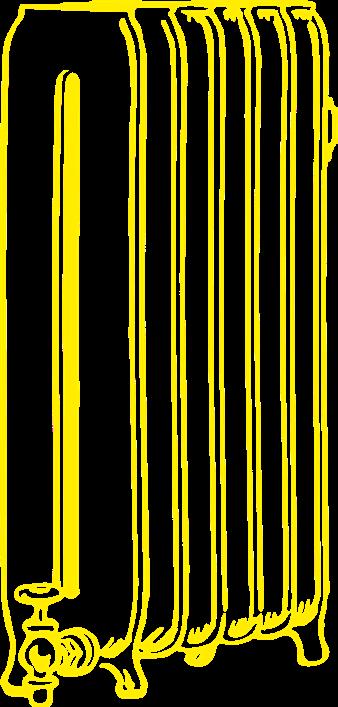 by Zoltan Tajti
by Zoltan Tajti
ROUX
5
DEFEATING THE PATRIARCHY – WITH BOOKS?
 By Leonie Guskowski
By Leonie Guskowski
In March 2023, Luxembourg’s statistics portal STATEC published a remarkable figure: The Grand-Duchy’s gender pay gap has become negative (-0,2%), meaning that women, on average, have a slightly higher hourly income than men.
Isn't this a clear sign that gender equality has been achieved and that we no longer need feminism?
Well yes, it is a good sign that in this calculation, salary equality is given. However, as with every statistic, it should be interpreted with caution. Other calculations come to different results if annual bonuses, part-time work, and the disaggregation by occupation are taken into account. The exceptionally high number of cross-border workers also tends to skew many financial statistics about Luxembourg.
Furthermore, while income equality is critical, inequalities also exist beyond that. The majority of care and household work, i.e. taking care of children or elderly relatives, cooking and cleaning, is still done by women – mostly unpaid. This unequal burden has been further exacerbated by the pandemic. Another example are the prevailing inequalities in access to affordable housing.
CID | Fraen an Gender, one of the key organisations in Luxembourg working on feminism
and gender issues, believes that knowledge is an essential enabler for overcoming these inequalities. At the heart of CID’s work is the library in the city centre of Luxembourg. Inconspicuous from outside, the small library on the second floor provides an impressive stock of more than 30,500 works. Visitors can indulge in literature, novels, magazines, but also music CDs and children’s literature. The works cover topics of feminism, gender and (in)equality, including gender-based violence, paid and unpaid care work, Black and intersectional feminism, or typically under-studied women’s diseases, such as endometriosis.
Can’t this be found in other libraries, you ask? Can I not order my favourite books online or find the literature I need for my term paper in the Luxembourg Learning Centre?
In parts, this may be true. However, over 50% of CID’s library collection is not available in other libraries. Isabelle Schmoetten, Executive Director at CID, explains how the CID’s idea goes beyond simply borrowing, reading and returning books: “We hope to make a contribution to overcoming inequalities by providing a safe space for everyone that is interested, that would like to document, understand more, understand backgrounds or is looking for role-models, but also for people that want to make historical analyses, for example”.
FEMINIST LIBRARY 6
The extensive stock and archives enable researchers and students to do scientific analyses on numerous topics, ranging from historical perspectives to media analyses, or to very specific fields such as the analysis of Luxembourg's music history through a gender perspective (MuGi.lu, a collaboration between the University of Luxembourg, CID and further partners). And indeed, when walking the aisles, you will see a few theses by students of the University of Luxembourg exhibited in the shelves. “We can actively contribute to the production of more gender knowledge. Even if Gender Studies does not exist as a subject here in Luxembourg: Every contribution that addresses it contributes to an expansion of scientific knowledge,“ says Isabelle Schmoetten.
CID further intends to be a place where peo ple can meet, exchange and inspire. Various events allow for individuals to expand their knowledge on specific subjects, but also to form a network among each other. This also enables the creation of safe spaces to ex change and mutually support one another. The organisation Finkapé – Réseau Afrode scendant Luxembourg, for example, meets in the facilities of CID for regular exchanges on afro-feminism and the fight against racism. “Students should question gender relations and not simply accept gender stereotypes” is a clear message that Isabelle Schmoetten passes on to us students.
She also emphasises the ability and freedom to say no. “No, I won’t smile for you. No, I will not conform to the image of the gentle and kind woman just because it would be more convenient for you. But also: No, I will not conform to the role of the strong, powerful protecting man, just because it is what you expect”.


Beyond the individual sphere, she further more encourages students to denounce in equalities. It is time for us to no longer simply remain silent when professors dismiss gender issues, or when there are almost exclusively
men teaching certain study programmes. “People should also question issues at the university itself, they should point out structural sexism and speak out against it”.
As students, our contribution to overcoming inequalities can be two-fold: First, the CID library or other sources of information can help us to broaden and deepen our understanding about inequalities and the ways to overcome them. Second, we can join clubs or associations within the university or beyond, where we can join forces with like-minded people and transform our newfound knowledge into action.
CID | Fraen an Gender Library – 14, rue Beck, L-1222 Luxembourg
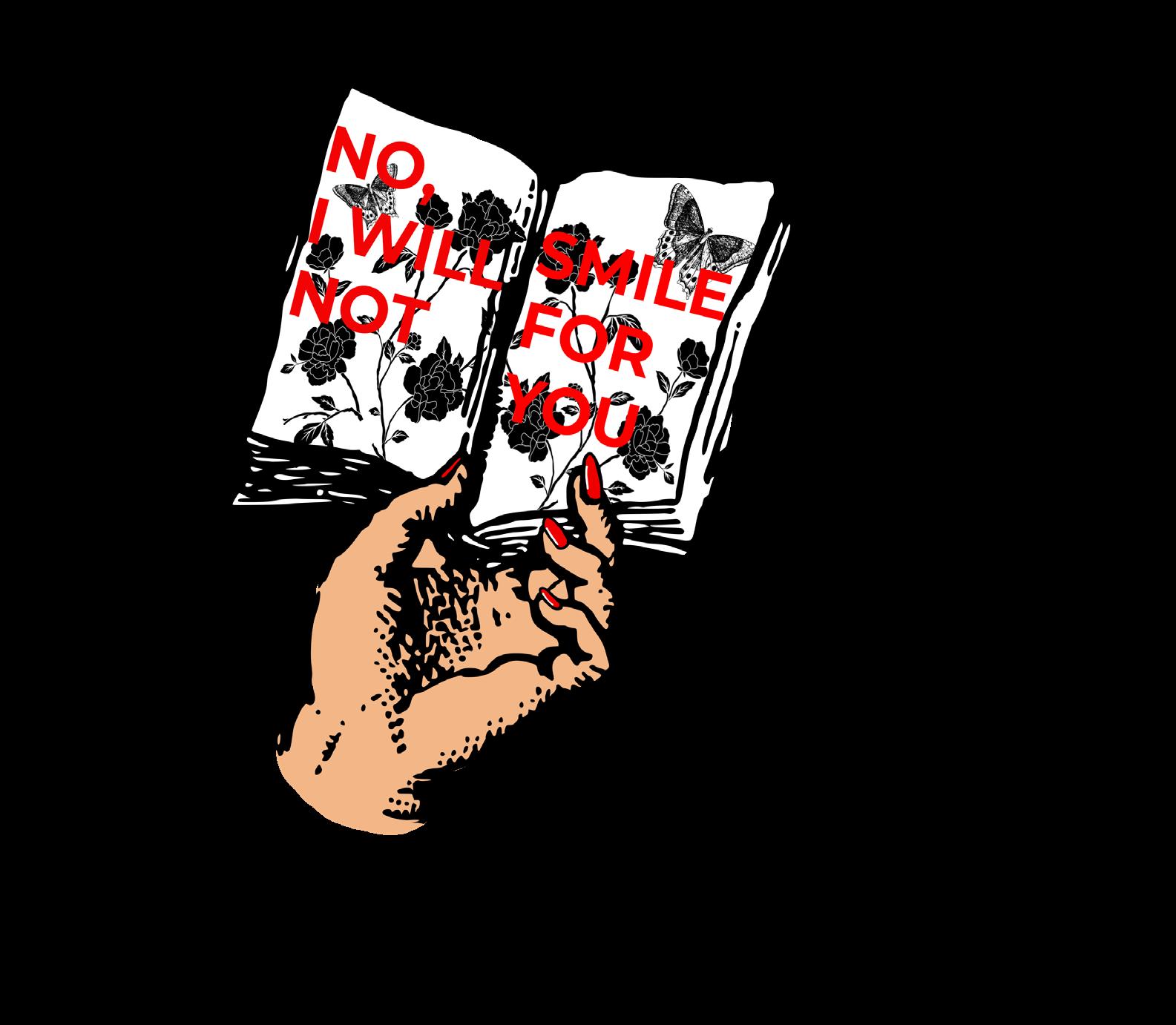
Opening hours: Tuesday, Wednesday, Friday: 12

ROUX
European Youth Card
Free Stuff & Discounts
–
You know you want it!
Have you heard about the European Youth Card? Now we bring you info on what it is, why it is good for you, and how to get it.
Marie-Ange Neu from the European Youth Card Association Luxembourg was happy to answer our questions to shed light, and make us an instant cardie.
What is the Youth Card exactly?
In short, it means huge discounts and freebies to people between the ages 12-30. That is if you obtain it in Luxembourg – elsewhere the upper age limit can be 26.
The card was in a dormant mode for some time, but we are back and on fire. We now have over a 100 partners –and counting – ranging from cinemas, shops, cultural and sport venues.
“You get our card, and you get the discounts from our partners. It’s that simple.”
Sing me up, por favor. How does one do it?
We now have over 600 card owners in Luxembourg, and 7 million across 30 European countries. If you want to join us, simply go to our website [see the contact box!] fill in the form, download the app on your smartphone, and you’re good to go. You can then use your digital card in 38 countries to get your local discounts!
Can you tell us about the Luxembourg discounts?
If you like cinema, you can buy movie tickets to Kinepolis for 8.50€ if you use the voucher you can get on our website. You can also go swimming with 50% off in a few pools. At Tango you can get a 50% discount on prices if you buy a smartphone. Check our website for more details, there are many more discounts available.
Also, now before the summer, one might want to get the card for travelling purposes. By getting our card, you will automatically and without charges receive Europ Assistance for free. It is a travel insurance valid world wide. It’s all inclusive, it pays for all treatment, stolen luggages and even hotel fees for family members if one – god forbid – would need to stay in a hospital.
Is there a price tag on getting the card?
Yes, a very small one. You pay 12€, and you get all its benefits. Plus, if you scan the QR code on this page, you can get it with a discount, for only 10€.
“The Europ Assistance insurance alone makes it well worth getting the card.”
EUROPEAN YOUTH CARD 8
Who can get the card?
Within the age limit, anyone can get the card, but for the Luxembourgish one you need to be a resident of Luxembourg, or live in a 30km radius of the country. So, incoming students, wait until you relocate to Luxembourg, and then sign up for the card!



Should one have questions about the card, who can one contact?
Apart from getting in touch with us via our website or Instagram, everyone is welcome to contact me personally via my email address. By the way, I am also the one replying to Instagram messages. Feel free to hit me up with questions, I’m happy to help!

And so it happened, and Now Marie-Ange welcomes your questions, if any. Then, you can be cardy. Like us.
 by Zoltan Tajti
by Zoltan Tajti
Contacts:
Official Website: https://eyca.org/

Marie-Ange’s email: marie-ange@anij.lu
Instagram: @cartejeuneslu
ROUX 9
Marie-Ange Neu - “Yourth Card Coordinator”
Which ICONIC Belval Building are you?
Zornitsa Doleva and Jennifer Jacquemin
If you are a student, chances are you spend a lot of time in our lovely Belval. And you are probably very familiar with all the iconic buildings on campus. If you have ever wondered which one of them best matches your personality, this quiz is for you!
Circle the option that best describes you:

1. When it comes to studying, which of the following describes you best? You understand things very quickly and generally don’t need a lot of time to study. When you do need to study, you prefer to do it alone and are generally not a big fan of study groups. You do most of your studying last minute, but somehow always do very well.
You are an organised note-keeper and are always study ready. If anybody needs to know anything about any class, you are the person to ask. Sometimes it seems to your classmates that you are better prepared than some of the professors.



You are a notoriously bad note keeper. You always ask your friends for any information on the exam last minute. You like to study in a group and tend to understand the subject better in a social setting. On your own, you often feel lost.

Your notes are usually over complicated and confusing for anyone but you. Still, you are always more than happy to explain them to anyone that would listen and you love to help out. In class, you are the person to ask the most questions, sometimes seemingly unrelated to the subject matter.
Study Notes


2. About yourself, you think that…


...you could never have too much coffee.


...you could never be too prepared.
...you are not as smart as people think.
...you are the best thing that has happened to the world.
PERSONALITY QUIZ
10
3. Which of the following best describes you with your friends?
You are the life of any social event and the heart of your friend group. You have the best connections, and it seems like you know everyone. You also have crazy, spontaneous ideas and you always know the best places to go. Your selfie game is impeccable, and people rely on you to take the best group photos.
Even though you are seen as very introverted, your friends will describe you as very witty and even a smart-ass. You are the person who will shower your friends with all kinds of random facts ranging from relevant to obscure. You are always ready for a good intellectual conversation.
You are always there for your friends and will gladly invite them over if they need advice and someone to talk to, even if they call you in the middle of the night. Although some might describe your advice as tough love, you don’t believe in hiding the truth from the ones that are close to you and will always tell it to them like it is.
Your discipline and love for order make you the best person to organise all activities with your friends. You are also always on time for any meet-up. Some might describe you as the “mother hen” of the group because you always tend to take care of everyone.
4. When in a group of people you don’t know very well you tend to…




...not be shy at all. You have no problem talking to strangers. You will ask anybody for directions or advice. You will also speak on the phone on behalf of your friends.


...make friends very quickly. You love huge groups of people and it’s rare that they remain strangers for very long. It’s usually not long before you become the centre of attention.


...be reserved, but not shy. You will usually only talk to strangers if it is needed. However, If someone mentions something you’re interested in, you have no problem engaging in a conversation. Shared interests are a very quick way to get you engaged and friendly.

...be nervous, shy, and often quiet. You tend to keep to yourself and avoid big groups of people you don’t know. However, you are also very good at immediately assessing whether you’ll get along with someone

11 ROUX
5. What are people’s impressions of you?
Direct and always to the point. People can always count on you because you are very reliable and always keep your word. Maybe a little stiff and literal.


When they don’t know you well, people see you as quiet and aloof. For the people that do know you, you are a geek that knows everything about everything. Friends think you are interesting, smart and a great conversation partner.


People usually see you as very professional and trustworthy, although difficult to get through. Some might describe you as having a tough exterior. For the ones that truly know you, you are a reliable friend who will always be direct and honest.
People always give compliments on your appearance. They also see you as loud and extravagant. You’re also seen as flirty, charming and very confident.

6. When you have a crush you...


...will immediately come up with a convoluted and complicated plan to find out if your crush likes you back. On the romantic front, you are a master strategist and an advanced social media investigator. If need be, you will also involve your friends in the plan.
...are very direct and straight to the point. You will tell them about your interest and there will be no drama in case of rejection. You are very mature when it comes to relationships.
...when it comes to crushes you are more of a dreamer than a doer. Shortly after developing a crush, you already have your whole life planned with them, even if you two haven’t exchanged a word. When it comes to talking to them in person, though, you tend to freeze.
...thrive on the romance front. At any given moment, you are talking to at least three people and are rarely single. When you develop a crush, you don’t hesitate to be very flirty and give them lots of attention. Somehow, drama always follows you.





MEET CHATGPT 12
PERSONALITY QUIZ
RESULTS


3. Which of the following best describes you with your friends?
Most : Just like the Maison du Savoir, you are a really organised person. There is never a time that you do not have anything under control, everything is booked in advance and is in accordance with an organised time schedule. You are the type of person that always knows everything about the next exam. You are in fact a high achiever; you never got a grade below 15. You can be perceived as a friendly and reliable person. You are the most mature friend with the best advice. Everyone looks up to you and is glad to be your friend. Without you, a plan can never work out, since you have everything under control, and you are the main leading force.

You are the life of any social event and the heart of your friend group. You have the best connections, and it seems like you know everyone. You also have crazy, spontaneous ideas and you always know the best places to go. Your selfie game is impeccable, and people rely on you to take the best group photos.
Even though you are seen as very introverted, your friends will describe you as very witty and even a smart-ass. You are the person who will shower your friends with all kinds of random facts ranging from relevant to obscure. You are always ready for a good
You are always there for your friends and will gladly invite them over if they need advice and someone to talk to, even if they call you in the middle of the night. Although some might describe your advice as tough love, you don’t believe in hiding the truth from the ones that are close to you and will always tell it to them like it is.
Your discipline and love for order make you the best person to organise all activities with your friends. You are also always on time for any meet-up. Some might describe you as the “mother hen” of the group because you always tend to take care of everyone.
Most : Just like the library, you may not seem at first as the most noticeable person. From the outside, you may seem fancy and modern, but also kind of mysterious and intriguing. You do not show your true self to everyone. However, when you get comfortable around someone and they get the chance to know you, they can see that behind the shy, introverted façade, there is so much going on. Getting to know you, one perceives that you are an intellectual bookworm full of surprises. You are a really smart person, you know everything about every topic, you can be very talkative and be fun to be around.
4. When in a group of people you don’t know very well you tend to…







Most : The shiny, glowy, golden outside from the Maison des Arts et des Etudiants, does not only reflect your appearance, but also your character. You are this type of person outstanding to everyone, you attract everyone’s attention, and you love getting that attention. You are always overdressed, extravagant and modern. In fact, you are the trendsetter. Every party takes place in the Maison des Arts et des Etudiants, just like the fact that every party is taking place where you are. You are a true party animal. You are most likely to be the social media/influencer of the group. Everyone loves to hang out with you, even though you can sometimes be unreliable.
...not be shy at all. You have no problem talking to strangers. You will ask anybody for directions or ad vice. You will also speak on the phone on behalf of your friends.



...make friends very quickly. You love huge groups of people and it’s rare that they remain strangers for very long. It’s usually not long before you become the centre of attention.

...be reserved, but not shy. You will usually only talk to strangers if it is needed. However, If someone mentions something you’re interested in, you have no problem engaging in a conversation. Shared interests are a very quick way to get you engaged and


...be nervous, shy, and often quiet. You tend to keep to yourself and avoid big groups of people you don’t know. However, you are also very good at immediately assessing whether you’ll get along with someone

Most :Have you seen the inside of the Maison des Sciences Humaines? Yes? Well, your personality matches this confusing and overcomplicated vibe. You are a very complex person and you often leave everyone around you baffled. You sometimes make things more difficult than they should be, but this makes you an interesting person to be around. As a hard worker that tends to stay up late, coffee is your best friend. Although sometimes you can seem intimidating, your friends will vouch that you always have time for them and you are always there for a conversation, and advice.

ROUX 13


We decided to use the campus as a source of inspiration through a creative exercise that would allow us to immerse our passion in the physical context in which we interact daily.
BELVAL



In an interpretive way, we wanted to reflect through the designs, the occupation of the territory, and the physical language that the campus has acquired through its real estate development; then, translate it into pieces that could be identifiable and with a clear inspiration in the current narrative of Belval.
Inspired by the surfaces, textures and personality of the main campus. The design reflects youth and charisma.
Our look was subtle; we wanted to recreate in our designs the textures, materials, colours, and – in a certain way – the spirit of the campus. The designs are modern, some more conceptual than others, but always connected with what Belval is today.
heritage and the smoke produced by iron ovens. A simple design but rich in symbolism, elegant and delicate.
Inspired by the informal manifestations of street art seen on campus. We selected a graffiti found on campus to be a fabric pattern to create the dress.
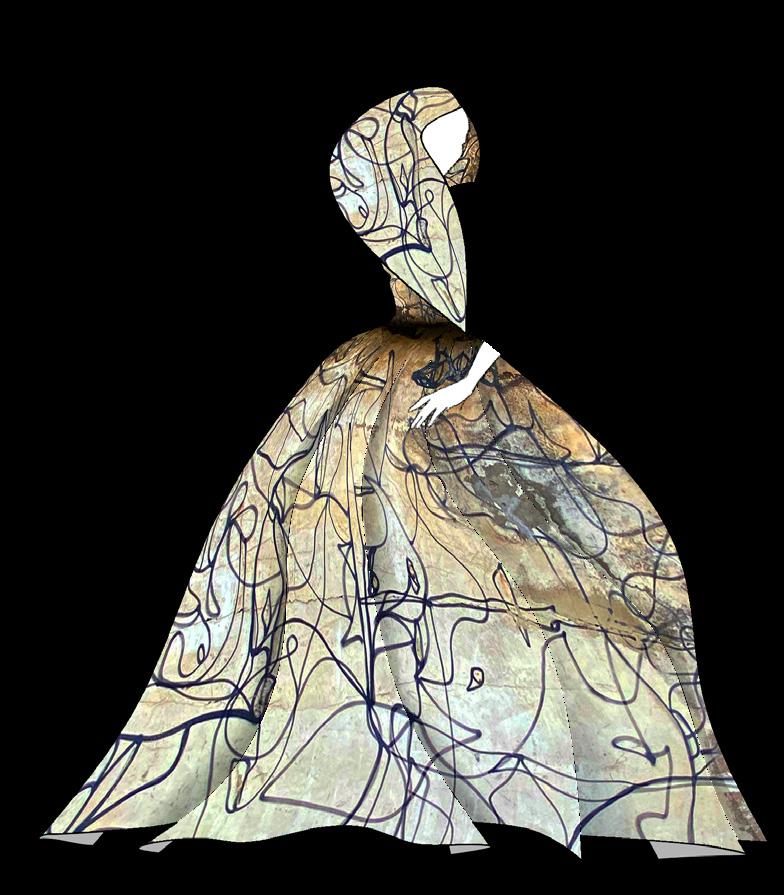
As is customary in the fashion world, our source of inspiration is a place, a context, and an ecosystem itself; Belval.

BELVAL FASHION 16
COLLECTION
by Wilhelm Gardeleone and Michelle Soares
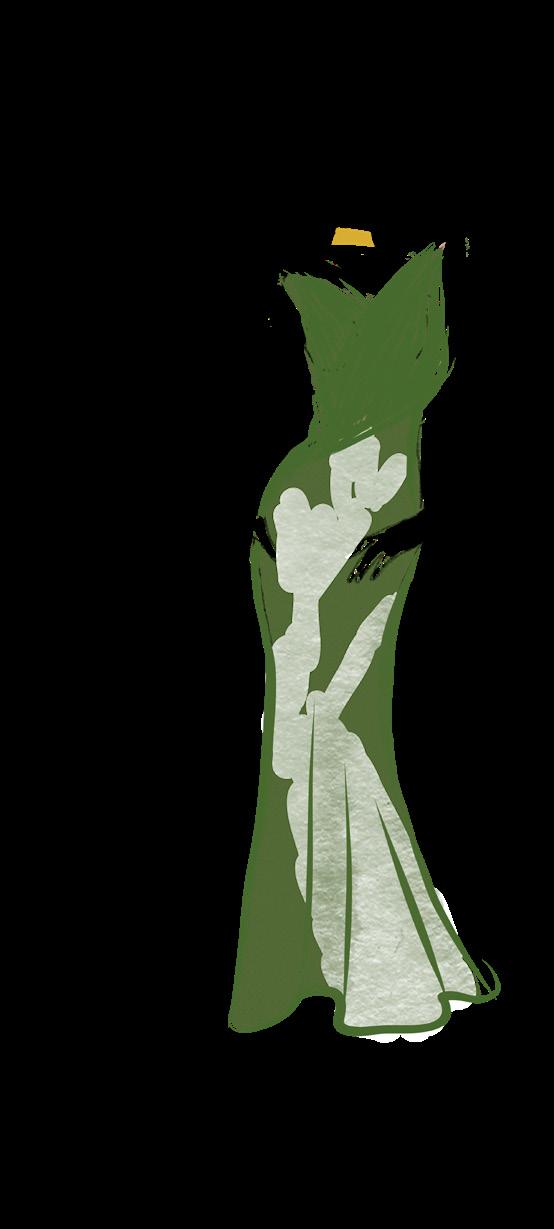
Inspired by the privately owned red building located on campus. A design that projects status and exclusivity with a dash of vanity.

Inspired by the historical elements, textures, and colors of the Place de l’Académie.
Inspired by the representation in opposite colors of the UFO lamps on campus.
A runway design, conceptual, with a dark feeling.
Contrasting with the heritage elements, the
Inspired by the main facade of the Learning Center’s lobby and its vertical lines pattern. A feminine and romantic design, with a structured and consistent silhouette.
Inspired by the color produced by the water inside the campus fountains.
The design is closely related to the manifestation of nature.



Inspired by the Learning Center’s facade and its combination of 3D triangular pattern and raw texture. A contemporary design that reflects strength, plasticity, irreverence and luxury.
“...runway fashion has the freedom and flexibility to reflect this inspiration quite literally: gothic cathedrals, the Hearst Tower and the Palace of Versailles have all been seen in the exaggerated proportions and extravagant detailing of catwalk designs..”
Kate Eales. Strutt & Parker

ROUX 17
By Jo Yi and Cristina (word count: 1469)
On a windy morning on Thursday 30th March 2023, the MUDAM graciously invited members of ROUX Magazine, to an exclusive opening of three new art exhibitions. Each exhibition showcased a unique art practice from three diverse artists from different walks of life. In the MUDAM’s café, we were greeted by the press team and many others from the artistic, cultural, and journalistic fields – seeking shelter from the early Luxembourgish spring weather, united under the MUDAM’s roof. The morning consisted of three guided tours with each of the curators of the exhibition.
We were first ushered to the central hallway of the MUDAM, where we caught our first glimpse of Michel Majerus’ Sinnmaschine exhibit. It showcased the work of the artist who employed digital techniques to explore popular culture, referencing art history and philosophy, as well as video games of the 1990s and early 2000s. Majerus’ art installation will be discussed further below by Cristina.
We were led to the second exhibition titled Peter Halley Conduits: Paintings from the 1980s on the first floor. This exhibition displayed Peter Halley’s artworks spanning over thirty years, including paintings, sketches, and notes that were exhibited publicly for the first time.
After that, we were then guided back down to the MUDAM’s lower level to view last, but not least, the exhibition of Tourmaline’s portfolio, Pleasure and Pollinator. Her work consists of ornate pieces, many of which are photography and videos, created to honour and celebrate the LGBTQI+ movement and queer culture while exploring the aftereffects of slavery using archival footage.
We will now review in depth the first two exhibitions as addressed above, starting with Cristina’s exploration of Michel Majerus, followed by Jo Yi’s take on Peter Halley. We would like to express our profuse gratitude to Julie, Inès and the MUDAM Team for the invite and the insights we were given with a virtual munificent round of applause. Now, please enjoy our review of Michel Majerus and Peter Halley.
Cristina on Michel Majerus:
I’d like to put some attention onto the Luxembourgish born artist Michel Majerus, who is an integral part of MUDAM’s new exhibition for the 2nd trimester of 2023, running until the 1st of October 2023. Majerus’ art had already enjoyed the spotlight of a dedicated symposium last year for the 20th anniversary of his passing.

The artist passed away unexpectedly in November 2002 in Luxembourg because of a plane crash. During his short career, he was an ambitious and internationally respected established artist. The MUDAM curator Bettina Steinbrügge placed the exhibition in the Grand hall, right at the museum’s entrance. It was supposed to be an interesting eyecatcher and reverberate Majerus’ artistic style through its shape, composition and sound echoing.
The installation is inspired by his 1997 project Sinnmaschine, which already plays on his personal interests about the increasing intermeddling of human life and digitalisation (Sinn = senses and maschine = machine). Since the beginning of his
Luxembourg
Contemporary Art in Springtime
MUDAM EXHIBITIONS 18
artistic endeavours, Majerus has been regarded, like Peter Halley, as a prodigy regarding his futuristic representation of digitalisation in art. In our time, digitalisation has not just reached our workplaces and private spheres but also our cultural productions: As an example, the Metaverse has been in the making since 2014 and NFTs have enjoyed a rising popularity since 2017. Our modern world is dominated through and through by digital aspects.
In the 90s, it must have felt similar for Majerus who took a deep interest in not only his contemporary mainstream culture but also its digital branches; the rise of video games and consoles, the popularity of MTV and the TV-culture in general. Personally, I thought it interesting that Majerus’ way of interacting with the digital world was to create a physical representation of it, while our digital artists prefer to literally create art that is
solely accessible in a digital sphere. It does bring closer the thought that we should be experiencing art and the world through our direct senses and not through a screen – an issue most humans struggle with today, in our post-analogue world.

Majerus utilised popularly enjoyed elements from his digital age such as bright neon colours, characters from video games and popular items of his time in general, and organised them in a seemingly random order in his collages. Not only are those considered modern because of their date of creation, but also because Majerus knew how to create art that was truly modern to his own contemporaries – he caught the spirit of his time: digitisation and consumerism.
At first glance, his different artworks seem random, but I personally think it’s a great interpretation of his personal perception of his time’s spir-

it: sensory overload due to growing consumerism and an unstoppable merging of our regular everyday lives with digital components.
MUDAM also made efforts to honour Majerus’ opinion on his own art: he highly valued documenting his own working progress and thinking on paper. The museum offered an insight into his digitalisation (see what they did there?) original diaries on iPads that are freely available in his installation. They allow to reconstruct his thought pattern on how he wanted his art to work around different exhibition spaces. They also display his personal library, which allows us to retrace his different literary interests and thus how they also might have shaped his artistic expression. The books permit the museum goers to feel closer to Majerus and the development of his life and life’s work – his art. They are complementary to his artworks.
ROUX 19
As a last addition, the curator has created the MUDAM installation as an homage to Majerus’ interests himself: He held the architecture of his work in high regard, and enjoyed sketching out the room layout and organising his art around it. The museum’s decision to showcase Majerus’ art in a metal structure that reminds the viewers of a construction site is indicative of this. MUDAM’s art installation on Majerus can be viewed as a homage to his person and the art he so carefully and thoughtfully created until his premature death.
moving image work Exploding Cell (1983), was engendered before the dawn of personal phones and computers, and it simply consists of a cell exploding. Halley fondly recalled working with a technician for an hour every day to create this piece. I for one truly appreciate the effort Halley went through, and this is adamant in the bright colours of this moving image. One could particularly say his work has predicted what the digital world looks like, making his works a classic staple and thus very relevant today in our technologically driven society.

Peter Halley’s exhibition is the culmination of his vocabulary of geometric shapes beginning in the 1980s. His shapes represent social matters in a post-industrialist society, providing a visual commentary on technological advances, confinement, life, death, and political matters including the 1980s nuclear threat. In other words, Halley is looking at how we are all connected and disconnected from one another, and this is a strong prevalent theme throughout this exhibition. His painting The Grave (1980) implies bereavement or loss through geometric shapes. Placing it in the middle of a canvas, suggests a confined space, a prison. One could additionally interpret a square to represent safety and comfort, but this is not the case, demonstrated by the dark colour tones Halley uses.
Moving on to his drawings in the hallway, there is a quiet aura surrounding them, resembling the works of other established artists Agnes Martin and Donald Judd. He presented his drawings as abstract ideas which slowly developed into thought experiments. For instance, one of his 1981 drawings was done on grid paper, showing the influence the aforementioned artists had on his works. Halley developed a sense of drawings, which are individual notes, and these notes are intended to be able to stand on their own and together in a group.
Now moving on from the east wing, we gradually migrate to the west wing, which I believe observes the conception of detachment and pain. For instance, in exploring the nuclear crisis in Three Sectors (1986), the colours, or specifically, the succession of colours entails an explosion. The black line near the bottom of the canvas suggests the muteness that follows

MUDAM EXHIBITIONS 20
Jo Yi on Peter Halley:
before, during and after an explosion.
To put it differently, his works are puissant, and utilising his developed language suggests no matter how much technology will perpetuate to advance, humans are social beings and need to compose affixments and connections which are remedial antidotes to life. Furthermore, his drawings being placed in the hallway genuinely provides a bridge between his works, whilst pellucidly exhibiting his artistic process and the consequentiality of connecting everything, demonstrated through the exhibition’s excel-
*Peter Halley’s Conduits: Paintings from the 1980s and Tourmaline’s Pleasure and Pollinator at the MUDAM is currently on until 15th October 2023.

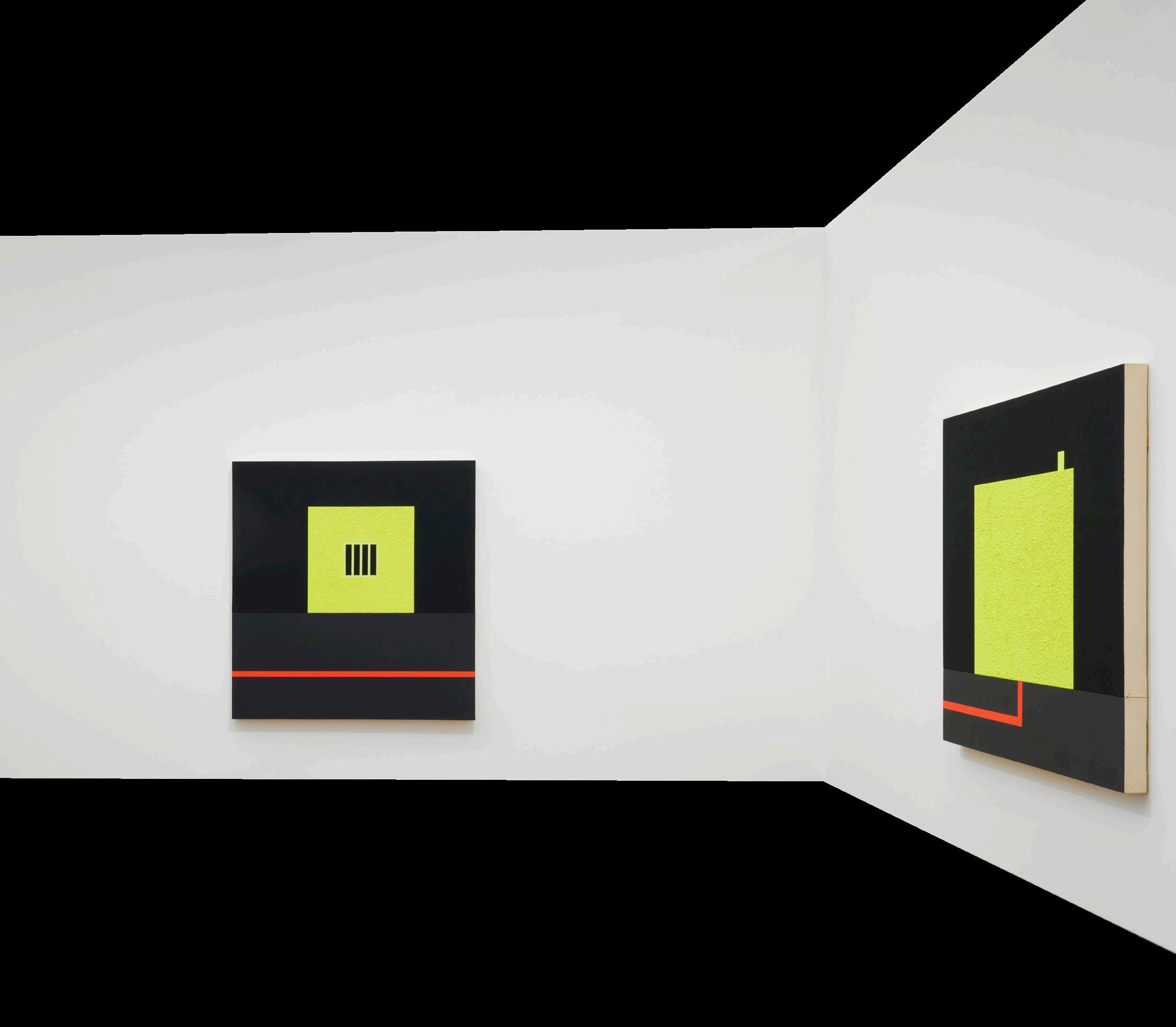

Article designed using:
View of the exhibition Michel Majerus. SINNMASCHINE, 31.03.2023 — 01.10.2023, Mudam Luxembourg
© Photo: Mareike Tocha | Mudam Luxembourg
View of the exhibition Peter Halley. Conduits: Paintings from the 1980s, 31.03.2023 — 15.10.2023, Mudam Luxembourg
© Photo: Mareike Tocha | Mudam Luxembourg

21 ROUX
In preparation for my first stay in Brazil – my partner’s home country – I’ve been exploring its national cuisine.
Everyone having been to Good Tasty in Esch-sur-Alzette, an authentic, and surprisingly affordable, Brazilian restaurant – has probably already developed an addiction to the small and puffy balls of cheese: pão de queijo (literally “cheese bread”).
Pão de queijo
It is a surprisingly simple recipe, albeit it is not vegan friendly, in opposition to our last issue’s recipe for rissóis that were easily customisable. Nonetheless, pão de queijo can be prepared in the traditional savoury version or as a sweeter treat, that I’ll propose to you under Extra. The amount of individual bread balls will be dependent on their side (opt for a smaller scale, so that they can fully cook –about the size of a ping pong ball).
Utensils

• 1 cup of medium size (every further mention of “cup” is relative to your chosen cup –do not confuse it with the American measurement)
• 1 tablespoon
• 1 pot
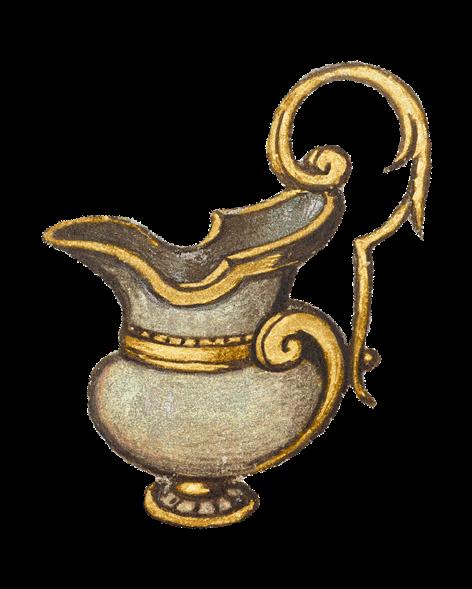
• 1 mixing bowl
• Oven or air fryer
RECIPE 22
•
• Half a cup of milk
•
• Half a cup of milk
Ingredients
Ingredients
• 1 egg
• 1 egg

• Half a cup of oil (preferably tasteless)
• Half a cup of oil (preferably tasteless)
• 1 tbsp of salt
• 1 tbsp of salt
• 500g of sour cassava/manioc starch (you can find it in large supermarkets, dedicated Brazilian stores or buy it online)
• 500g of sour cassava/manioc starch (you can find it in large supermarkets, dedicated Brazilian stores or buy it online)
• 1 cup of parmesan cheese (or halfhalf with mozzarella cheese)
• 1 cup of parmesan cheese (or halfhalf with mozzarella cheese)
• 1 cup of lukewarm water
• 1 cup of lukewarm water
Extra: for a more savoury filling, add your preferred deli meat / for a sweeter filling, add your favourite jam – see instructions
Extra: for a more savoury filling, add your preferred deli meat / for a sweeter filling, add your favourite jam – see instructions
Instructions
Instructions
1. Preheat your oven to 180°C – you can skip this step if you’re making them in an air fryer.
1. Preheat your oven to 180°C – you can skip this step if you’re making them in an air fryer.
2. Put your pot on medium heat. Combine the milk, the oil and the salt in the pot and boil.
3. Place the sour cassava starch in the mixing bowl. Add the heated liquids on top.
2. Put your pot on medium heat. Combine the milk, the oil and the salt in the pot and boil.

3. Place the sour cassava starch in the mixing bowl. Add the heated liquids on top.
4. Mix well, until the dough has cooled down a little bit.
4. Mix well, until the dough has cooled down a little bit.
5. Add the egg and the milk to the bowl and mix well (it’s easier with your hand but however you prefer it works well).
5. Add the egg and the milk to the bowl and mix well (it’s easier with your hand but however you prefer it works well).
6. Add the lukewarm water and combine until it becomes a firmer dough.
6. Add the lukewarm water and combine until it becomes a firmer dough.
7. Now you can form your cheese balls. The size is up to your preference, but they should all be a comparable size, so that they cook evenly.
8. Extra: if you’re adding a savoury or sweet filling, stretch out the dough on the palm of your hand, add the filling, then close it.
7. Now you can form your cheese balls. The size is up to your preference, but they should all be a comparable size, so that they cook evenly.
8. Extra: if you’re adding a savoury or sweet filling, stretch out the dough on the palm of your hand, add the filling, then close it.

9. Bake the pão de queijo in your preheated oven or air fryer at 180°C for 15-20 minutes (until golden brown).
9. Bake the pão de queijo in your preheated oven or air fryer at 180°C for 15-20 minutes (until golden brown).
Enjoy!
by Cristina Sobral
by Cristina Sobral
Enjoy!
ROUX 23
Sleep Without Dreams
The sound is coming from a black figure standing in the open area between the student accommodation buildings. It is clear that he is singing, but the words have been eroded by the wind so much that they are no longer recognizable. I don’t even attempt to understand them. I am leaning on the railings of the balcony on the second floor of the building, overlooking the area, and trying to light my cigarette in this wind with a lighter that doesn’t have much of its flint left and I give the cold shoulder to this pitiful theatrical scene.
When the first puff of smoke enters my lungs, my ears start to perk up out of idleness. I hear a muffled bass rhythm. A party is going on in the kitchen of one of the units. A noisy car passes by on an out-of-sight street. Someone shouts from the window of the car. The restaurant below the building is closed. The bar and pharmacy in front of the building also do not operate at this time of the night. And once again, this boy, as if he had recovered his drained energy, begins to sing.
I have been living in Belval for about two years and out of curiosity, tried to get to know its tempo here and there. Many say that life in this industrial and office city stops after seven o’clock, and the few full-time residents are the unfortunate ones who must take refuge
“What would an ocean be without a monster lurking in the dark? It would be sleep without dreams.”
- Werner Herzog

in their holes after dark and wait in silence for the sunrise. But like the bats around this town’s furnaces or the rabbits living in its park, I find myself amongst the nocturnal creatures that are ignored to simplify the matter: no one defies the night’s command of silence.
The sound of the metal factory can be heard throughout the night from every corner of Belval. Freight trains occasionally pass around it screeching. Cleaning machines move on its streets. And I think that laborers, drivers, security guards, policemen, students, and hotel staff, all, in an unwritten ritual every night, hide their symptoms of being alive. It’s as if their presence in the community is an inevitable sin, and they try to be as inconspicuous as possible out of shame. And this singing man has decided to rebel tonight.
When I was a child, my bed was next to the single-pane window of the bedroom, and after lights out, every sound coming from the alley prompted me to stand on the bed and look for its source. This sound was sometimes from the accordion of a boy who sang with an unmelodious voice to his lover who lived in one of the houses in the neighborhood and probably did not even know about the boy’s existence. A common way to express one’s selfless love back in the days. The boy would walk the length of the alley twice, repeating his song to the accompaniment of the accordion, and then he would walk away. If he stayed longer, the shouts and threats of a neighbor
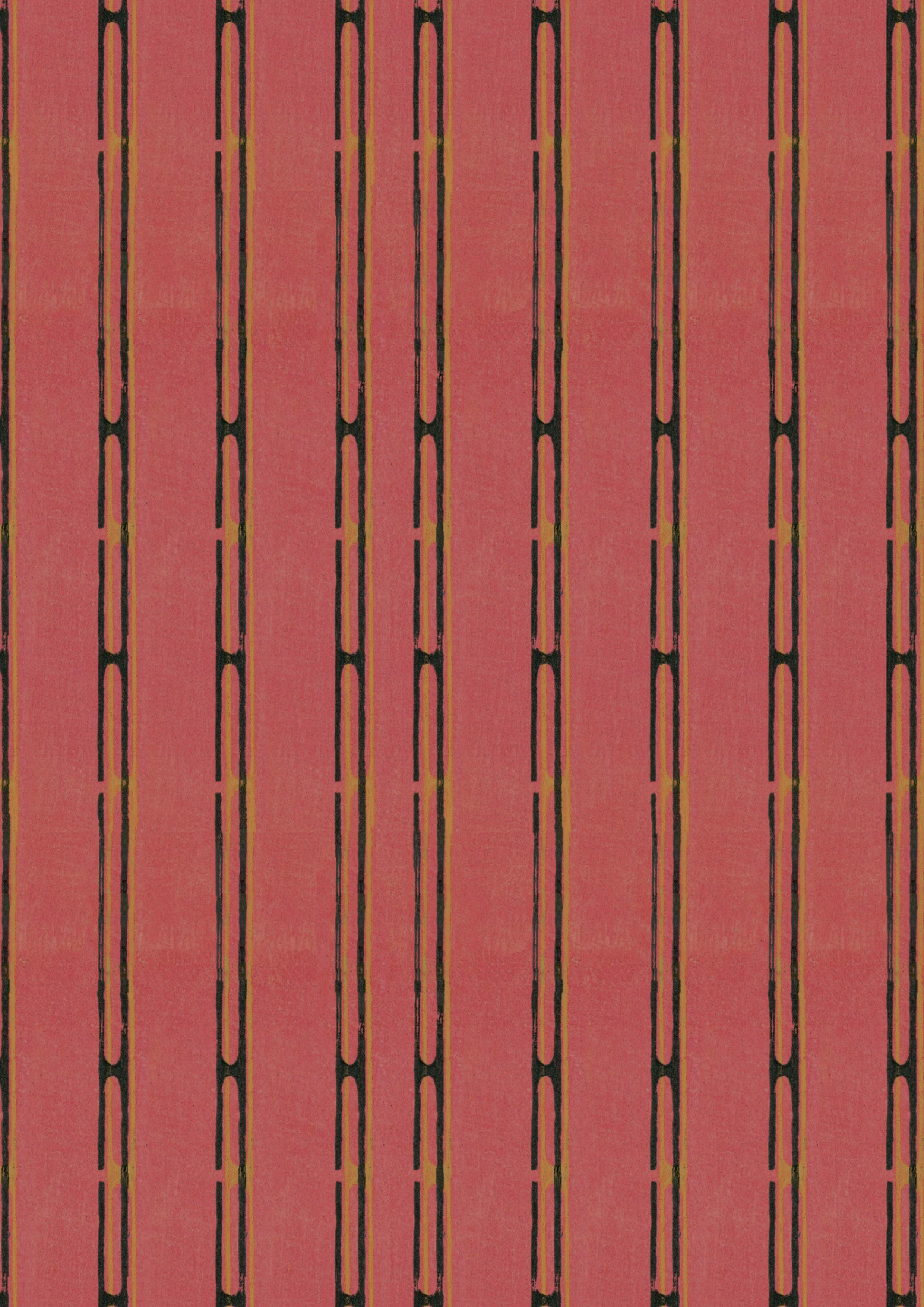
SHORT STORY
from the window would force him to leave.
Sometimes the gypsies would appear late at night. They would sing folk songs. No one understood what those meant, but their voices were pleasant. They never came too late, so as to not disturb anyone’s sleep. You would see two people standing under the light of an electric lamp, one playing a drum and the other singing a ballad. Every now and then, their music would stop and start again, and you would know that a woman or a child from the neighbors had come to the door and given them a bag of rice, eggs, dinner, or some money.
The most popular night singers were those who came near the New Year to sing that spring was near. They were noisy and invited residents outside their houses to watch them for a few minutes. There were many gratuities, and for this reason, it sometimes happened that two or three groups would

pass through the same neighborhood during a single night.
It’s funny that culture has also created a mold for rebellion. Thousands of kilometers away, in Central Asia, singing in the street at night has different implications. Each lawbreaker has expectations from the silent crowd, and every night call is deemed normative. But I can’t even recognize the language of this antagonist’s song. I wonder from where in the world he came to this town? What does it mean to sing at night in his motherland? What is he requesting from me, his inevitable listener? I don’t know and probably no one else knows either. It probably won’t take long for him to get bored and abandon this embarrassing symphony.
The wind smoked most of my cigarette. I go back to my room and feel that I should draw the curtains before turning on the light.
 by Kasra Karami
by Kasra Karami


ROUX 25
Undine: what do I do with all of this hurt? how do I live with this heart that you gave me? tell me, Mother is there a Love that doesn’t crush you under Her feet? tell me, Mother why do you only teach me to lose never to keep?
Sea Mother (whispers): darling, dearest look at your sisters: they know no pain they know no sorrow they never loved and so they are free of that torturous treacherous human soul and so
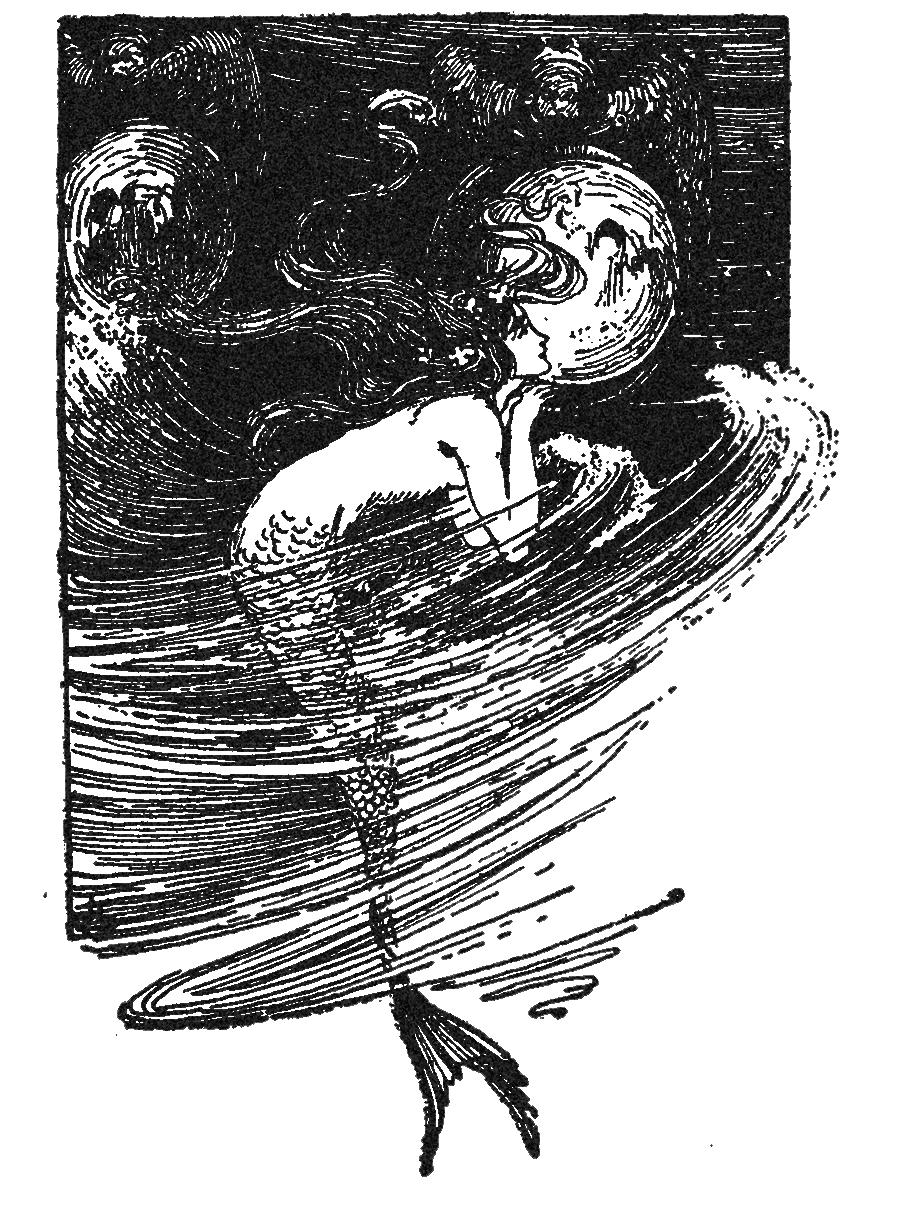
should you be! and so should you come back come swim with us
into the great bellow

see, my lovely child, you simply have never belonged to that world
see, my gentle child, that world has simply never belonged to you
POEM 26
Undine: so take me, dear sisters, take me to where I belong! take me under the waves in the blue of my oblivion comb my hair, kiss my neck ease this burning ache give me embrace that I crave, teach me that waxing and waning dance of the kingdom of underwater, make me your queen, make me your own!


and I promise — I’ll never beg again never crawl again never give my heart to a man again.
by Kristina Shatokhina
ROUX 27


POEM 28
Summer Wind
By Jo Yi
Listen to the summer wind
The air
She squalls
Fretful
And yet sweet
Howling for a new tomorrow
Praying for dawn to come
She must wait
Wait
Wait
There are some things one must do
Patience is a virtue
One is often told this
So she waits
For one to return
Or to start a new path Of life
To be validated
Accepted
Wanted
For this, she must wait
This is what it means to be summer
Summer charms
But it is finite
The winds of summer
Gently caress the earth's skin
…

A memory is created
Breathing life
Such is the power of touch
Quietly, she spirits away
A fleeting moment
She must be listened, valued, and appreciated
Such is the beauty of the summer wind.
ROUX 29
















 by Zoltan Tajti
by Zoltan Tajti
 By Leonie Guskowski
By Leonie Guskowski








 by Zoltan Tajti
by Zoltan Tajti
























































 by Kasra Karami
by Kasra Karami








